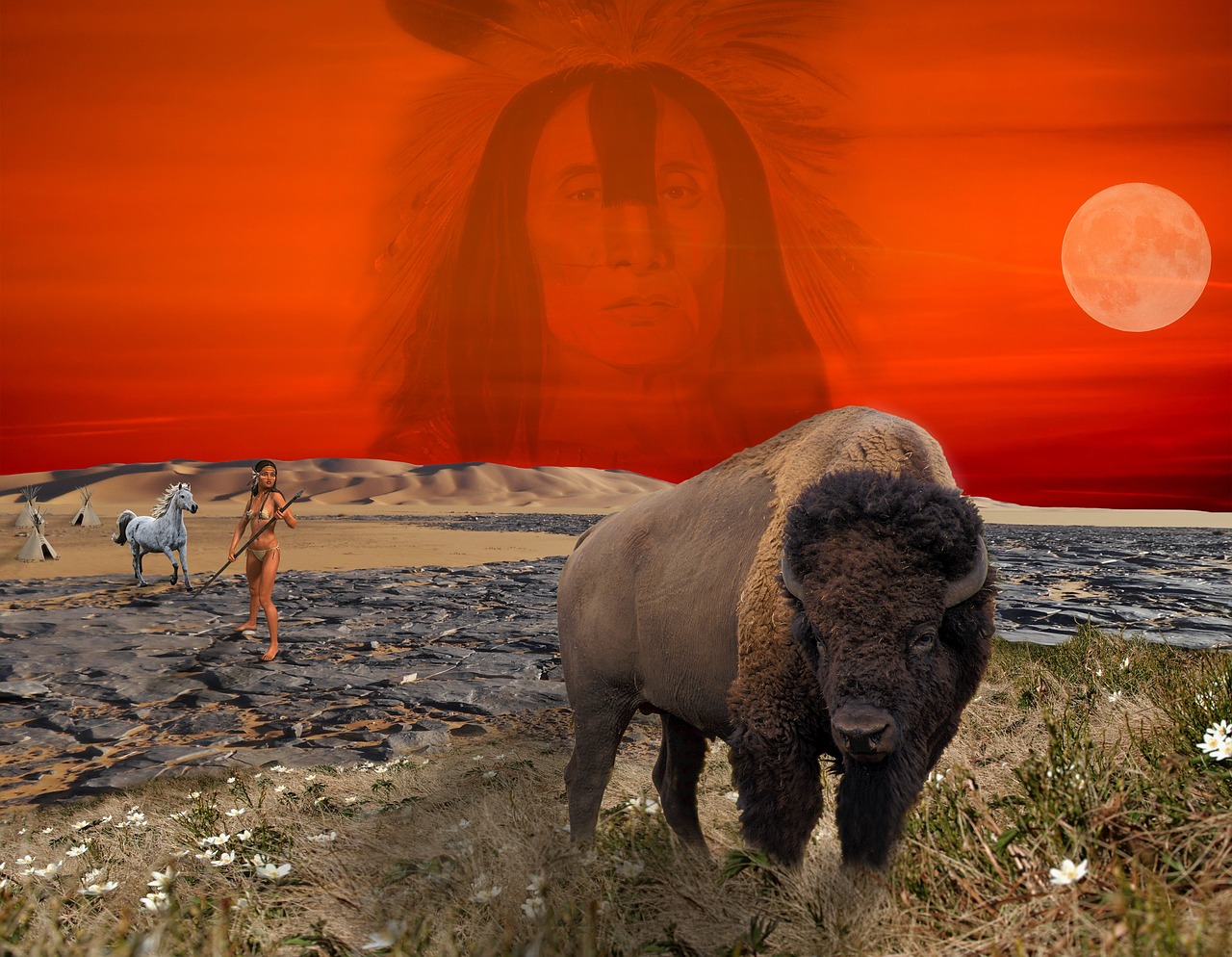Have you ever wondered what the fascinating patterns and bright colors on traditional clothing of Native Americans really mean? These garments are far more than just beautiful textiles – they are living history books, spiritual expressions, and cultural identity woven into fabric.
Much more than just clothing: The spiritual dimension
For indigenous peoples of North America, traditional clothing was never just simple protection from the elements. Each garment, each color, and each pattern carries deep spiritual meaning and cultural symbolism.
The color language of Native Americans
Colors in traditional Native American clothing follow a complex symbolism that varies from tribe to tribe, yet certain universal themes exist.
The four sacred directions and their colors
In many cultures of the Native Americans, colors correspond to the four directions and their associated qualities.
| Color | Direction | Meaning | Tribal examples |
|---|---|---|---|
| East | Red | Sunrise, enlightenment, new beginnings | Lakota, Cherokee |
| South | Yellow/White | Innocence, growth, summer | Navajo, Hopi |
| West | Black | Adulthood, reflection, sunset | Ojibwe, Sioux |
| North | White/Blue | Purity, wisdom, winter | Navajo, Pueblo |
Other important colors and their symbolism
Traditional Native American colors were obtained from natural materials and carried specific meanings:
- Red: Blood, life, energy, war – from iron oxide or berries
- Blue: Sky, water, spirituality – from indigo or minerals
- Green: Earth, growth, healing – from plants and herbs
- Black: Night, death, the unknown – from charcoal
- White: Purity, peace, spirit world – from kaolin clay
Sacred patterns and their hidden messages
The traditional Native American patterns are a visual language that conveys stories, prayers, and cosmological concepts.
Geometric patterns and their meaning
Geometric designs in Native American clothing follow strict cultural rules and traditions.
- Triangles: Mountains, tipis, feminine energy
- Circles: Sun, moon, cycles, unity
- Zigzag lines: Lightning, water, snakes
- Squares: Earth, the four directions, stability
- Spirals: Life, growth, evolution
Animal and nature motifs
Traditional Native American animal patterns represent the qualities and spiritual powers of the beings depicted.
- Eagle: Courage, wisdom, connection to the divine
- Bear: Strength, healing, self-reflection
- Buffalo: Abundance, gratitude, sustenance
- Snake: Transformation, healing, earth energy
- Wolf: Loyalty, intelligence, family spirit
Tribe-specific clothing traditions
Plains Indians: Buffalo hunters and nomadic riders
The traditional clothing of the Plains Indians such as the Sioux, Cheyenne, and Blackfoot was shaped by buffalo hunting and a nomadic lifestyle.
Characteristic elements:
- Buffalo leather garments with quillwork and later bead embroidery
- War shirts with badges of honor and bravery symbols
- Feather headdresses as spiritual and social distinctions
- Moccasins with symbolic sole patterns
Southwest peoples: Weavers and artisans
The Navajo clothing tradition and Pueblo peoples are renowned for their weaving and complex textile patterns.
Characteristics of Southwest clothing:
- Woven textiles with geometric patterns and natural dyes
- Silver jewelry with turquoise as a protective and status symbol
- Kachina dolls and ceremonial garments
- Traditional wool blankets and shawls
Northwest Coast peoples: Totem poles and button blankets
The traditional clothing of the Northwest Coast Indians such as the Tlingit and Haida features formline designs and clan-specific symbolism.
Materials and manufacturing techniques
The production of authentic Native American clothing follows centuries-old techniques using natural materials.
Traditional materials and techniques:
- Leather: Buffalo, deer, elk – tanned with natural methods
- Beadwork: Glass beads later replaced traditional porcupine quills
- Quillwork: Dyed porcupine quills as the earliest form of decoration
- Natural fibers: Cotton, nettle fibers, cedar bark
- Dyeing techniques: Plants, minerals, and insects as color sources
Modern interpretations and cultural appropriation
Today, traditional Native American designs are experiencing a renaissance, yet the line between inspiration and cultural appropriation is delicate.
Respectful handling of indigenous designs:
- Purchase from authentic indigenous artists
- Respect closed spiritual symbols
- Understand the cultural meaning behind designs
- Support indigenous arts and crafts initiatives
Where to see authentic Native American clothing
For those interested, there are many opportunities to experience traditional Native American clothing in all its splendor.
Recommendations:
- Powwows and cultural events
- Indigenous museums and cultural centers
- Seasonal ceremonies (for invited guests)
- Online collections of ethnological museums
Conclusion: Living culture through textile art
The traditional clothing of Native Americans is a fascinating window into indigenous worldviews, spiritual beliefs, and cultural identity. Each garment tells a story, each pattern carries a message, each color embodies a meaning.
By understanding this rich symbolism, we can appreciate and respect the depth and complexity of indigenous cultural expression.
Search for: meaning of Native American clothing, traditional Indian patterns, indigenous color symbolism, authentic tribal clothing, Native American beadwork, traditional moccasins, cultural appropriation clothing, buy Native American designs, learn Native American symbolism

